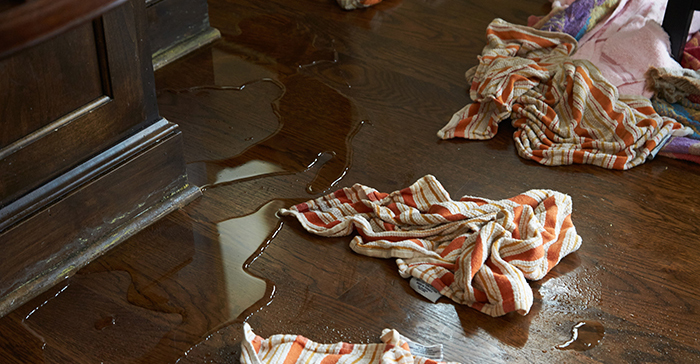Bathroom Water Damage - Ways To Prevent This Happening
Bathroom Water Damage - Ways To Prevent This Happening
Blog Article
In this article in the next paragraph you can locate a bunch of first-rate news in regards to Preventing Water Damage in the Bathroom.

The bathroom is exceptionally at risk for damp build-up as well as potential water damages as a result of the regular use water in it. This write-up supplies straightforward examination strategies to assist finding water damages risks.
The regular use water in the restroom makes it extremely vulnerable for moist accumulation and also possible water damages. By checking it frequently, you can decrease water related damages.
The adhering to collection of assessments is simple to do as well as should be done as soon as in every 3 months in order to maintain your shower room in good shape and to prevent possible water damages caused by the bath tub, the shower, pipe joints and plumbing, sinks, closets, and also the bathroom
Do not overlook executing these assessments as well as be comprehensive while executing them. Bear in mind that these easy inspections can conserve you a lot of cash by supplying early signs for water damages
Sinks and Cabinets
Sinks and also cupboards are revealed to wetness and moisture everyday and also are commonly overlooked. Evaluate on a regular basis under the sink and on the kitchen counter above it. Fix any drip in the catch as it may suggest drainpipe problems. Check out the sink, slow draining pipelines may show a blocked drainpipe. Replace sink seals if they are fractured or loose.
Bath tub and Shower
The shower and also bathtub call for special interest and upkeep. Examine the ceramic tiles and also replace if fractured. Make sure that there is no missing out on grout between the floor tiles. Examine and also replace split caulking at joints where the wall surfaces satisfy the flooring or the bathtub. Blocked drains pipes and pipelines troubles will protect against the bathtub from drying and also may suggest significant problems underneath the bath tub. Speak with a specialist instantly to avoid architectural damages. Take note of stainings or soft locations around the bathtub walls as they might show an internal leak.
Plumbing
Signs for water damages are tough to detect considering that most pipes are set up inside the wall surfaces.
Pay unique attention to flooring as well as wall surfaces dampness and stains as they may show an unnoticeable plumbing issue. Examine moisture degrees in adjacent areas too.
The Toilet
The toilet is a prone water joint. Examine the water lines and search for leaks around the bathroom seat, in the pipe, and also under the water container. If you detect any signs of wetness on the flooring around the bathroom, look for leakages in the toilet edge and tank seals.
Be aware that hanging toilet bowl deodorants enhances the possibilities for blockages.
Water Damage Signs In The Bathroom To Avoid Cleanup
Musty smell
This is one of the easiest signs to catch because musty smells are so odorous. The damp, earthy, moldy smell should be a big red flag. The smell will develop when moisture gets trapped in surfaces, and begins to facilitate mold growth. Leaking pipes under cabinets, inside walls, and behind shower fixtures will cause moisture to stay trapped and not dry, which will lead to mold growth and spread. As soon as you notice any musty smells in your bathroom, have it checked for hidden water damage and cleanup signs.
Visible mold
If the smell isn’t there to give it away, sometimes you will actually see mold growth. Finding mold in your bathroom is a serious problem, because mold is very harmful to your health. By the time mold growth is visible, it also means that water damage has already occurred and been present for some time. The only way the mold problem can be resolved is to find the source of the moisture and get it stopped. To safely and adequately remove mold, you need to have professionals handle the remediation. Do not waste any time in getting mold problems addressed, fixed, and sanitized so that you can protect you and your family from the many respiratory symptoms caused by mold exposure.
Damaged floors
Bathroom floors should be able to withstand some exposure to water while still remaining in good condition. However, when excess exposure or water leaks occur, they will begin to damage even the most water-resistant flooring. If you notice any cracking, bubbling, staining, or warping on your bathroom floors, there is probably a water leak somewhere causing the distortion. If you notice areas of the floor have become softer, or even have a spongy feeling, there is probably damage to the subfloor. Subflooring is typically made up of plywood. When plywood is exposed to water or moisture, it will absorb it. Once it has become saturated, the weight of the excess water will cause the wood to swell and soften. Check the floors in your bathroom frequently to catch any of these sings before they lead to damaged subflooring.
Changes on walls
When water leaks behind walls, it will cause changes in the drywall. Peeling plaster, blistering paint, and soggy wallpaper are all good indicators that excess water is building up behind the wall. Water leaking behind drywall will cause it to swell and be soft to the tough. If you start to notice gaps along the trim of your walls, or where tile meets the wall, it could also be a strong indicator that there is a leak behind the wall. Any changes, distortion, or damage on the walls should be evaluated as soon as you notice it to prevent further water damage and cleanup.

I ran across that piece about How to Fix a Water Damage Bathroom when doing research the internet. Be sure to take a moment to promote this article if you appreciated it. Thanks for going through it.
Go Services Report this page